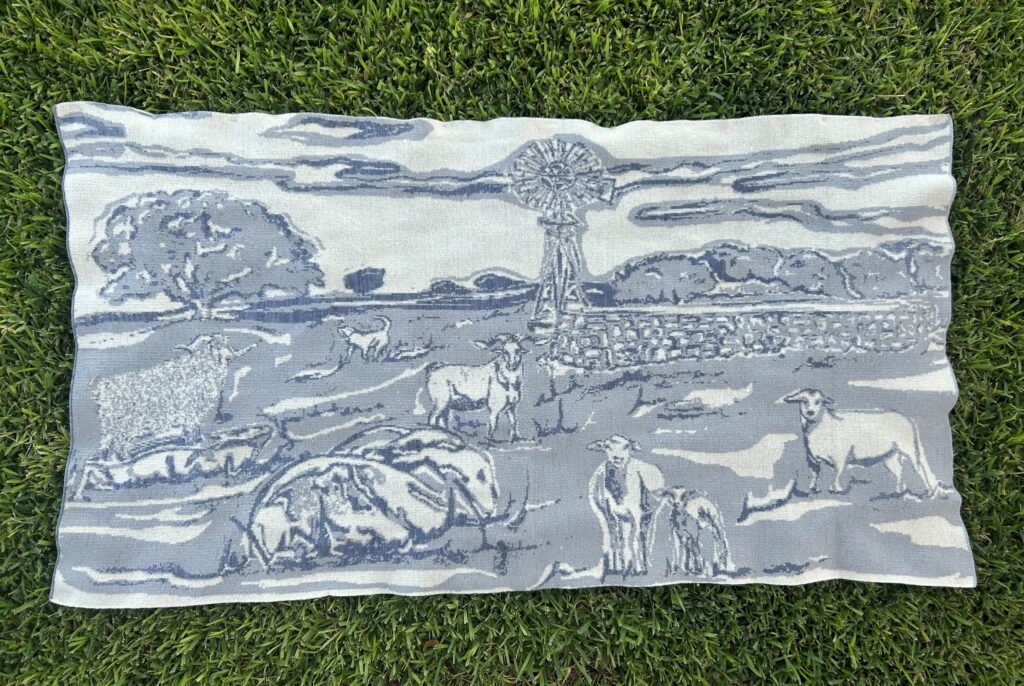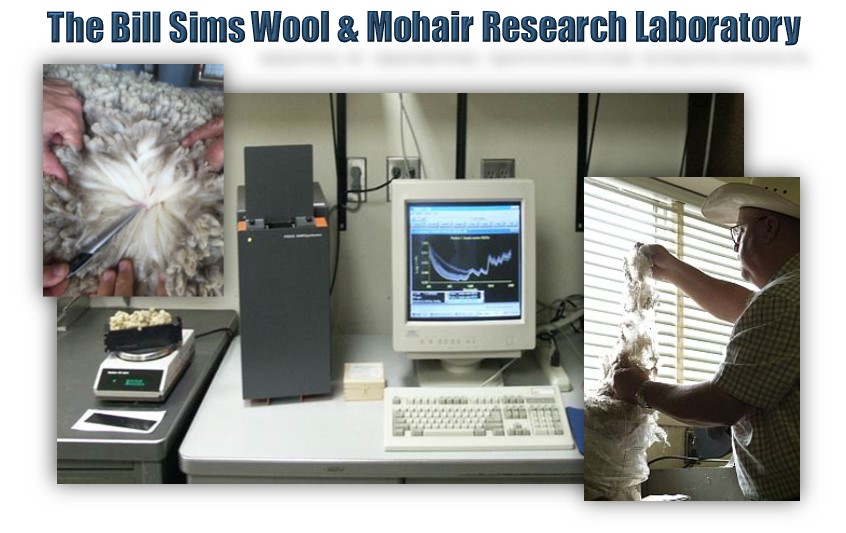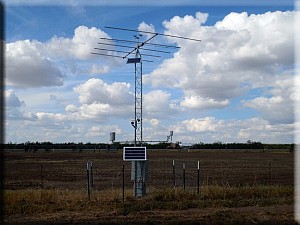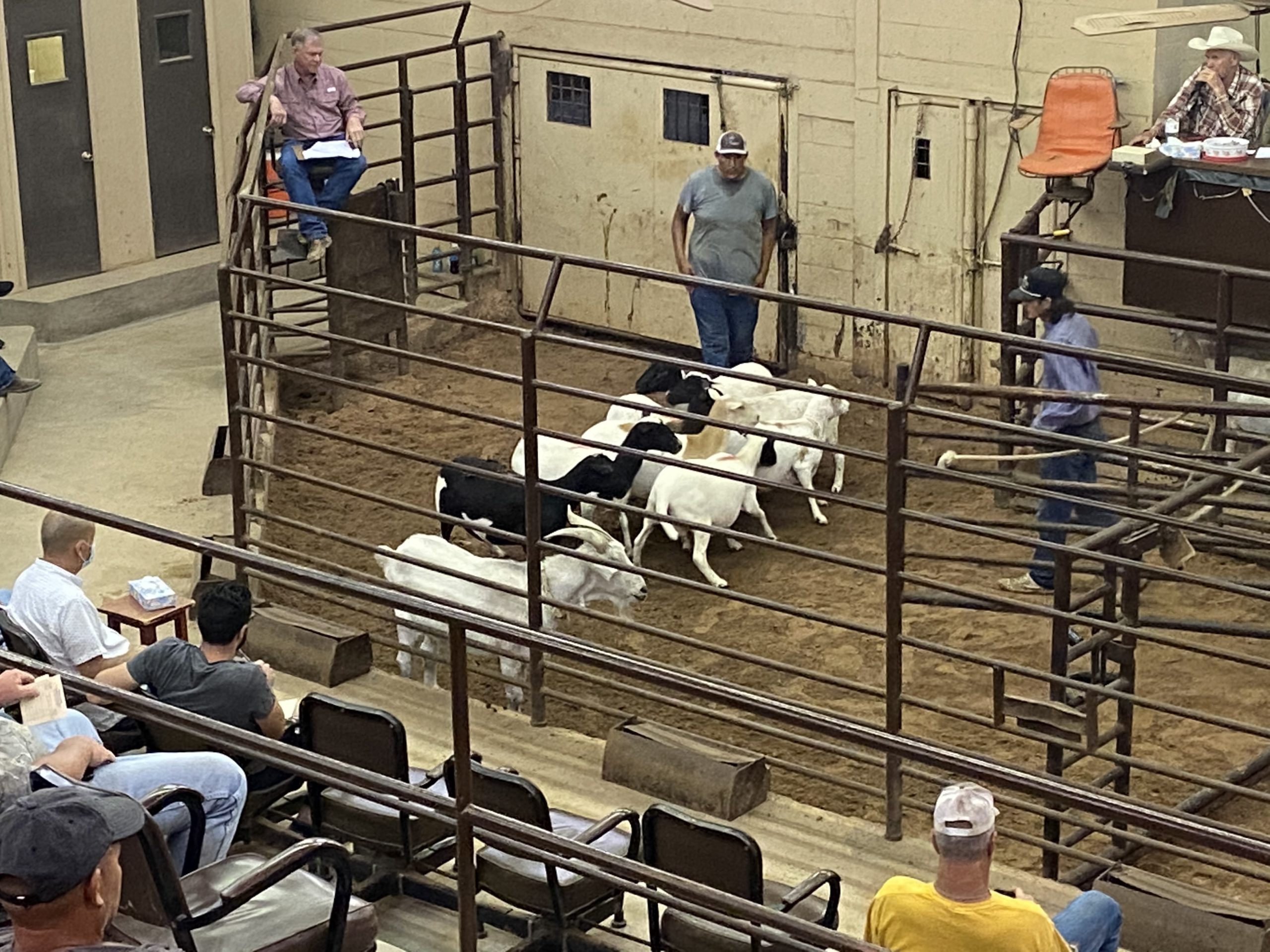The summer heat is in full swing in Texas and it’s very important that you provide a cool area for LGDs, especially your long-haired ones. Proper grooming that cleans out dead hair allows the cooler morning air to get trapped in their coats to insulate them into the midday temperatures. After that the dogs need shade and cool soil to lay in to help regulate their body temperatures. Some LGDs like to relax in water troughs which may get filled with dirt and muck. Remember that dogs can’t sweat, and they regulate their body temperature by panting. If your dog is panting profusely, take steps to cool them down immediately.
AgriLife Livestock Guardian Dog Program: Events and Update
Our next online seminar will be on Aug.17 at 3 p.m. on Zoom. Check out our Facebook page for more information. Dr. Katherine Lord from the University of Massachusetts will be returning to continue her discussion from November of 2022 on canine behavior and bonding. This webinar will cover the development of predatory behaviors in LGDs. Do not miss this great presentation! The online seminar will be free as always. You can sign up on our events page.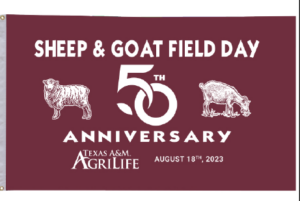
Join us at the AgriLife Center on Aug. 18 from 8 a.m.–12p.m. for the 50th Annual Sheep and Goat Field Day. There will be workshops on the latest research being conducted at the Center along with local vendors. The annual AgriLife Sheep and Goat Expo will follow the event at the Spur Arena in San Angelo starting that afternoon.
The Texas LGD Association will be hosting its annual membership meeting on Aug.19 at 1p.m. at the Spur Arena as part of the AgriLife Sheep and Goat Expo. New or potential members are welcome to attend the meeting.
Common LGD Problems
This month we will cover a few common issues that producers contact me about regarding their LGDs and ways to solve them.
One of the top questions producers ask is how to stop chasing behavior in adolescent LGDs. This is not related to any specific breed but rather adolescent behavior in all LGD breeds. I generally provide a couple of suggestions. The first tool to try is a dangle stick. A dangle stick is a piece of wood or metal pipe that hangs from the dog’s collar and hits their front legs to slow them down when running. This device either trips the dogs, makes them hobble around or makes their front legs sore so that they do not chase anymore. Some dogs will get creative and pick up the stick in their mouth and still chase, but at least they can no longer bite which also usually occurs with this behavior as they are trying to get the goat or lamb to stop running away. You can find more information on how to make a dangle stick on our website.
A second way that helps to stop chasing behavior is to place your teenage LGD in a pen for 2-3 weeks with some mature rams and/or billies. These mature males will not tolerate an LGD chasing them or chewing on them. This method teaches the young dog to be submissive towards the livestock they are guarding and allows a hands-off process for producers.
The third and final suggestion that I give for dogs close to maturity that are still chasing or for dogs that didn’t stop this behavior with the previous two methods is a shock collar. I use this as a last resort as some people may incorrectly use the training tool and make dogs fearful of humans. If you need to use a shock collar to correct unruly behavior, use it judiciously. Set up an inexpensive pop-up hunting blind near a pen with the dogs to correct the chasing behavior. That way they do not correlate the shock with seeing people near them. Otherwise, you may create a dog that is fearful of humans and hard to catch.
The second question I often receive from producers is how to stop dogs from roaming away from their livestock. This is a much more
complicated issue to stop. We believe this starts at an early age with improper bonding of the dogs. LGDs need to be with or in close contact with the type of livestock they are to protect from at least 3 weeks of age to 8 weeks of age. At 8 weeks of age the dogs need to be in full contact with livestock until 14 weeks of age when the dog’s brain development of forming attachments closes. Some devices that are helpful to track and control roaming in LGDs are GPS trackers, electric fencing, and invisible fence systems. There are several types of GPS/invisible fence systems on the market today that producers can choose from. However, most invisible fence systems have short battery lives that require recharging frequently so they may not be an option for larger producers. Two systems we are currently testing are from the Invisible Fence Brand and the SpotOn GPS Fence companies. Both systems have pros and cons and will require the use of pastures close to your headquarters to be used effectively. Providing electric fencing in
the bonding pen or training pastures is an easy way to teach LGDs respect for fences. Preliminary data indicates a decrease in roaming for dogs bonded in pens with hot wire vs. dogs bonded in pens without hotwire.
The last question I receive frequently during the warmer month is problems related to LGDs getting into water troughs. LGDs often like to cool down in the warmer months by climbing into water troughs for several minutes or even longer. If this becomes an issue, producers can try grooming long haired LGDs during the late spring. Proper grooming of all LGD haircoats will keep your dog’s cooler by allowing proper airflow over their bodies to keep cool. If this doesn’t stop the issue, it might warrant constructing a barrier that will stop them from getting into the water trough but still allow livestock to water. Alternatively, LGD owners might set up a separate temporary water trough for the dogs to cool off in that is independent from normal livestock water. This allows the dogs the ability to cool off but not muck up the water system.
Bonding Project Update
Round Five Dogs
All puppies have been released from the bonding pens and are doing well with the other dogs and extra livestock in their pastures. The Top
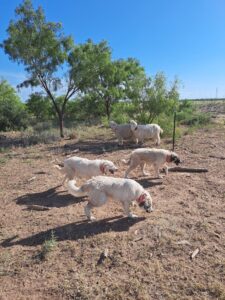
The Top Gun (Maverick, Goose and Viper) pups spending time together in the pasture with their charges. (Texas A&M AgriLife photo courtesy Costanzo 2023)
Gun dogs have been placed into a pasture that is controlled by an invisible fence system to continue the use of an electric deterrent when they come close to the fence boundary. We hope that the use of this system will further decrease the drive for the dogs to leave their home pastures as adults. We have seen a decrease in adult dogs roaming that were bonded in pens with hot wire as puppies when compared to dogs that did not have hot wire in their bonding pens. Using hot wire in bonding pens seems to teach LGDs respect for fences and to minimize the loss of dogs due to roaming as adults.
Round Four Dogs
All the dogs in round four of the bonding project have successfully completed the program. The cooperating producers have all seen an increase of 40% to 100% in lambing percentages from previous years. We anticipate these producers will continue to see lambing percentages increase as the dogs mature over the next year.
In closing
If you enjoyed this monthly LGD blog, please don’t forget to subscribe to it with this link The Guardian Way | Texas A&M AgriLife Research and Extension Center at San Angelo.
To provide feedback on this article or request topics for future articles, please contact me at bill.costanzo@ag.tamu.edu or 325-657-7311.
The Texas A&M AgriLife Livestock Guardian Dog Program is a cooperative effort by Texas A&M AgriLife Research and the Texas Sheep and Goat Predator Management Board. Make sure to follow us on our social media sites and share them with your friends and family!
Facebook: https://www.facebook.com/TAMUlivestockguarddog/
Instagram: @tamulivestockguarddog
YouTube: https://www.youtube.com/channel/UCF7YbP6bNDV7___6H8mifBA
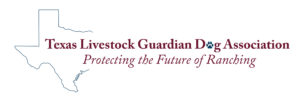 Do not forget to check out the Texas LGD Association online! Follow the organization at https://www.facebook.com/TexasLGDAssociation or check out their website!
Do not forget to check out the Texas LGD Association online! Follow the organization at https://www.facebook.com/TexasLGDAssociation or check out their website!




